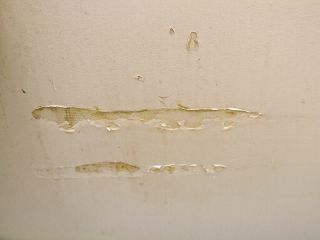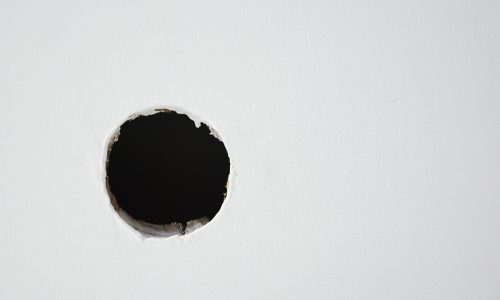Important Tips for Effective Drywall Fixing and Installment Methods
Reliable drywall fixing and installation needs a cautious strategy. Understanding the kinds of drywall and having the right tools is essential. Exact measurements and correct methods can considerably influence the outcome. Many forget crucial actions like taping and fining sand, which can make or break the final look. As jobs proceed, typical challenges may occur that need attention. Exploring these pointers can result in a more refined and effective finish.
Comprehending Various Sorts Of Drywall
Recognizing the different kinds of drywall is important for any successful fixing or installment job. Drywall, frequently referred to as gypsum board, comes in a number of selections tailored for certain applications. Requirement drywall is one of the most widely used kind, suitable for general interior walls and ceilings. Moisture-resistant drywall, commonly green in color, is created for areas susceptible to moisture, such as shower rooms and cooking areas. Fireproof drywall, usually tinted pink or purple, is crafted to endure higher temperatures and is commonly made use of in garages or near heaters. Additionally, soundproof drywall aids decrease sound transmission, making it suitable for multi-family homes or tape-recording workshops. Specialty drywall, like concrete board, is made use of in wet locations like showers or bathtub surrounds. Recognizing these types aids in picking the best material for every task, making certain sturdiness and efficiency in repair work or brand-new setups.
Important Devices for Drywall Repair Work and Setup
Having the right devices is essential for effective drywall fixing and installation. A quality utility knife is vital for reducing drywall sheets specifically. A drywall T-square assists assure straight sides, while a taping blade is needed for applying joint compound smoothly over joints. In addition, a drywall saw permits reducing out damaged sections or fitting drywall around components.
For hanging drywall, a power drill with drywall screws is important, as it allows quick and secure installation. A degree is also essential to validate that the drywall is straight and appropriately straightened. A sanding block or pole sander is necessary for smoothing out joint compound once it has dried out. Lastly, a measuring tape is crucial for accurate dimensions, protecting against waste and making sure an appropriate fit. Outfitted with these tools, people can take on drywall jobs efficiently, causing professional-looking outcomes.
Step-by-Step Overview to Fixing Holes and Cracks
When addressing holes and fractures in drywall, having the right devices and products is vital for an effective repair service. This overview describes the essential things and provides a clear, step-by-step procedure to successfully recover the surface area. Understanding these components will certainly aid assure a smooth coating and long-lasting outcomes.
Devices and Products Needed
A fully equipped toolkit is important for reliable drywall repair and installment. Key tools include an energy knife for cutting drywall, a tape measure to assure accurate sizing, and a drywall saw for larger holes. A putty blade is vital for applying joint substance efficiently, while a fining sand block or post sander aids achieve a smooth surface. For patching, a roll of fiberglass harmonize tape or paper tape is necessary to reinforce joints. In addition, a drill and screws are needed for protecting new drywall items. Crucial products include joint compound, guide, and paint to complete the repair service. Having these tools and products handy guarantees a smoother, a lot more efficient fixing procedure, generating professional-looking results.
Repair Process Steps
Repairing openings and cracks in drywall needs an organized approach to guarantee a seamless coating. Initially, the location surrounding the damage must be cleaned up extensively to get rid of dust and particles. Next, for small cracks, a putty knife is used to apply a joint substance equally over the location. For larger holes, a patch is needed; the harmed area is removed, and a brand-new piece of drywall is suited area, safeguarded with screws. When the patch remains in position, joint compound is applied to blend the sides. After drying out, fining sand the area smooth is essential. The fixed surface ought to be topped and painted to match the surrounding wall surface, guaranteeing a low-profile repair.
Methods for Setting Up Drywall Panels
Installing drywall panels needs careful planning and specific implementation to ensure a smooth and specialist coating. It is vital to measure the wall room precisely and cut the panels to fit, making sure that they straighten with the studs. Positioning the panels horizontally is usually recommended, as this can boost the structural stability and reduce the variety of joints.
Using drywall screws, installers should secure the panels every 16 inches along the studs, making certain a company hold. It is important to avoid overdriving the screws, which can harm the paper surface. For sides and edges, utilizing an energy blade permits clean cuts and a tight fit.

Finishing Touches: Taping, Mudding, and Sanding
As soon as the drywall panels are firmly in area, the next essential action includes the complements of taping, mudding, and sanding. Insulation is very important for producing a seamless shift in between panels and hiding joints. A quality drywall tape, either paper or fiberglass harmonize, should be applied over the seams, guaranteeing it adheres correctly to the mud that will certainly be used next.
Mudding, or applying joint substance, follows the taping procedure. This substance fills spaces and ravel the surface. A first layer ought to be applied generously, feathering the sides to mix with the drywall. After the initial coat dries, subsequent layers might be required for a perfect coating.
Fining sand is essential to attain a smooth surface. A fine-grit sandpaper should be used to gently ravel any kind of blemishes. Treatment needs to be taken to avoid over-sanding, which can harm the drywall - Interior Painting. Correctly executed, these finishing touches develop a professional look all set for painting
Tips for Maintaining Your Drywall After Installment
Maintaining drywall after installment is vital to preserving its look and architectural honesty. Regular cleaning is necessary; dust and dust can accumulate, so mild cleaning with a wet cloth is suggested. Home owners should also check for any type of indications of dampness or mold and mildew, especially in high-humidity locations like bathrooms and kitchens. If any type of damage happens, it's important to resolve it without delay to stop additional concerns.
Using furnishings pads can help protect against scrapes or dents from hefty products. Additionally, repainting the drywall with a top notch, washable paint offers an extra layer of security and makes future cleansing simpler. Avoid utilizing abrasive cleansers or tools, as these can harm the surface area. Ultimately, preserving a steady indoor climate with suitable humidity degrees will certainly assist stop contorting or splitting over time. By complying with these tips, one can assure that drywall stays in exceptional condition for several years to come.
Regularly Asked Concerns
For How Long Does Drywall Require To Completely Dry After Installation?

Can I Install Drywall Over Existing Drywall?
Yes, drywall can be installed over existing drywall, however it is vital to ensure the underlying surface area is safe and properly prepared. This approach can improve insulation and minimize installation time, though it may add weight.
What Is the very best Means to Soundproof Drywall?
The most effective means to soundproof drywall involves utilizing specialized soundproofing materials, such as durable channels, acoustic caulk, and sound-dampening drywall. These methods efficiently reduce sound transmission in between spaces, enhancing overall acoustic performance in living spaces.
How Do I Pick the Right Drywall Thickness?
To choose the best drywall thickness, take into consideration the application and location. Requirement property walls commonly use 1/2 inch, while ceilings or specialized locations may need 5/8 inch for added toughness and soundproofing capabilities.
Are There Eco-Friendly Drywall Options Available?
Yes, environment-friendly drywall options are available. These include products made from recycled materials, plaster boards with low unpredictable natural substances (VOCs), and those utilizing sustainable manufacturing processes, supplying environmentally-conscious options for building and improvement jobs.
Having the right devices is necessary for efficient drywall repair service and setup. For hanging drywall, a power drill with drywall screws is vital, as it allows fast and safe installment. Key devices include an utility knife for cutting drywall, more info a tape measure to ensure precise sizing, and a drywall saw for bigger holes. Yes, drywall can be set up over existing drywall, yet it is important to assure the underlying surface is secure and properly prepared. The finest way to soundproof drywall entails using specialized soundproofing materials, such as durable channels, acoustic caulk, and sound-dampening drywall.